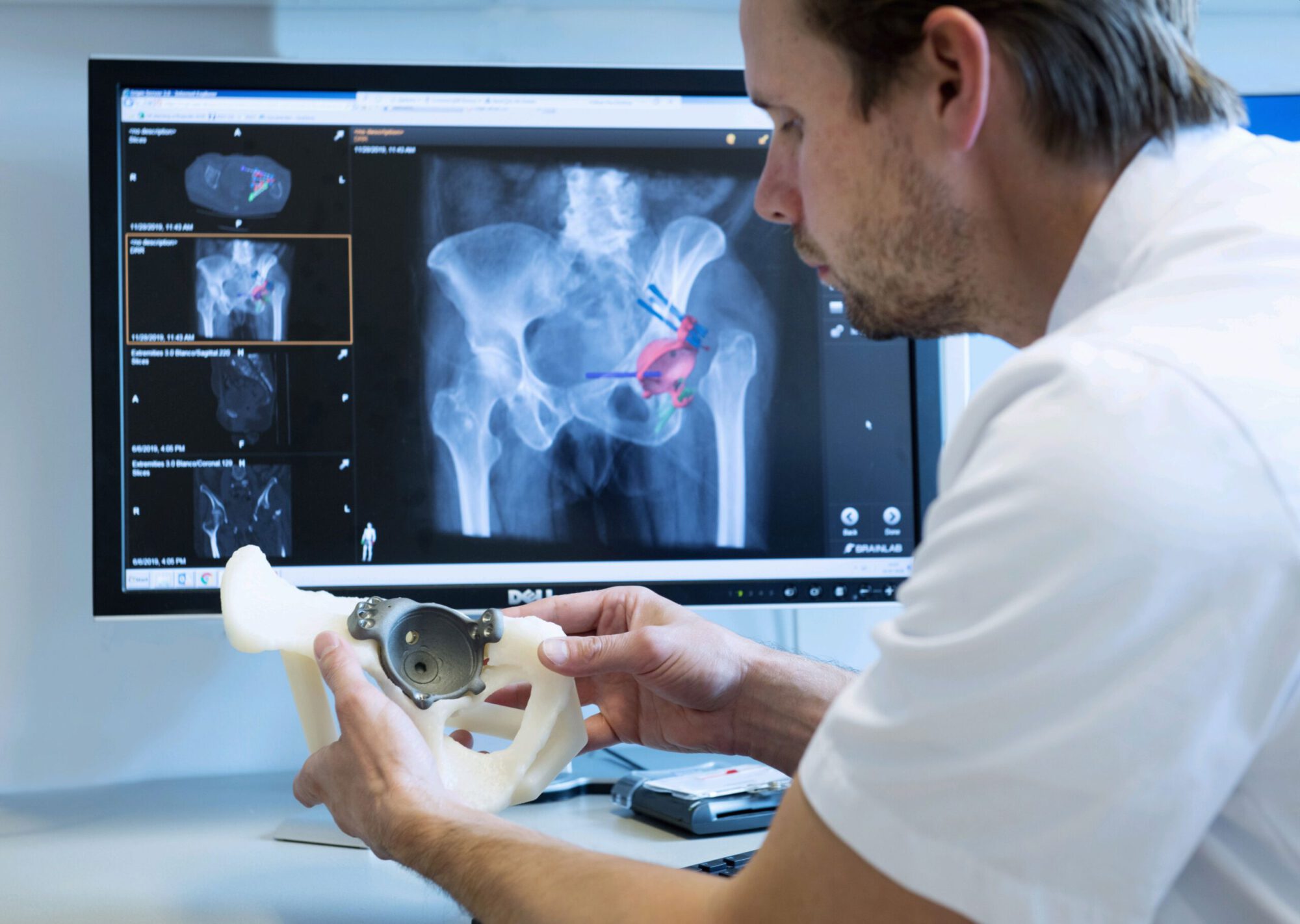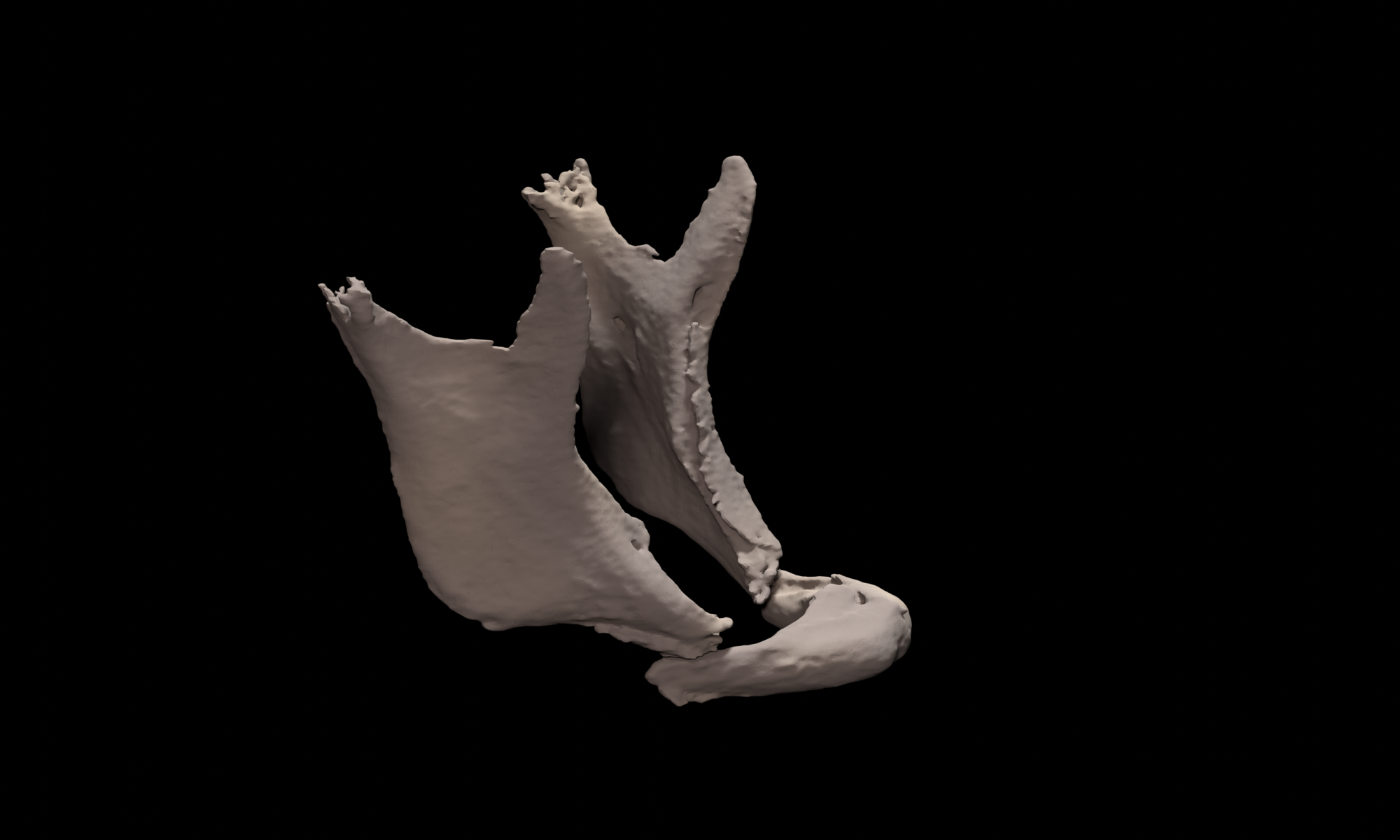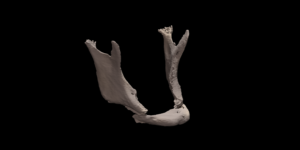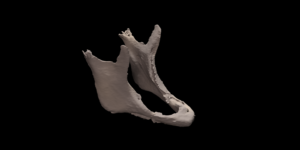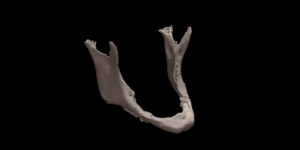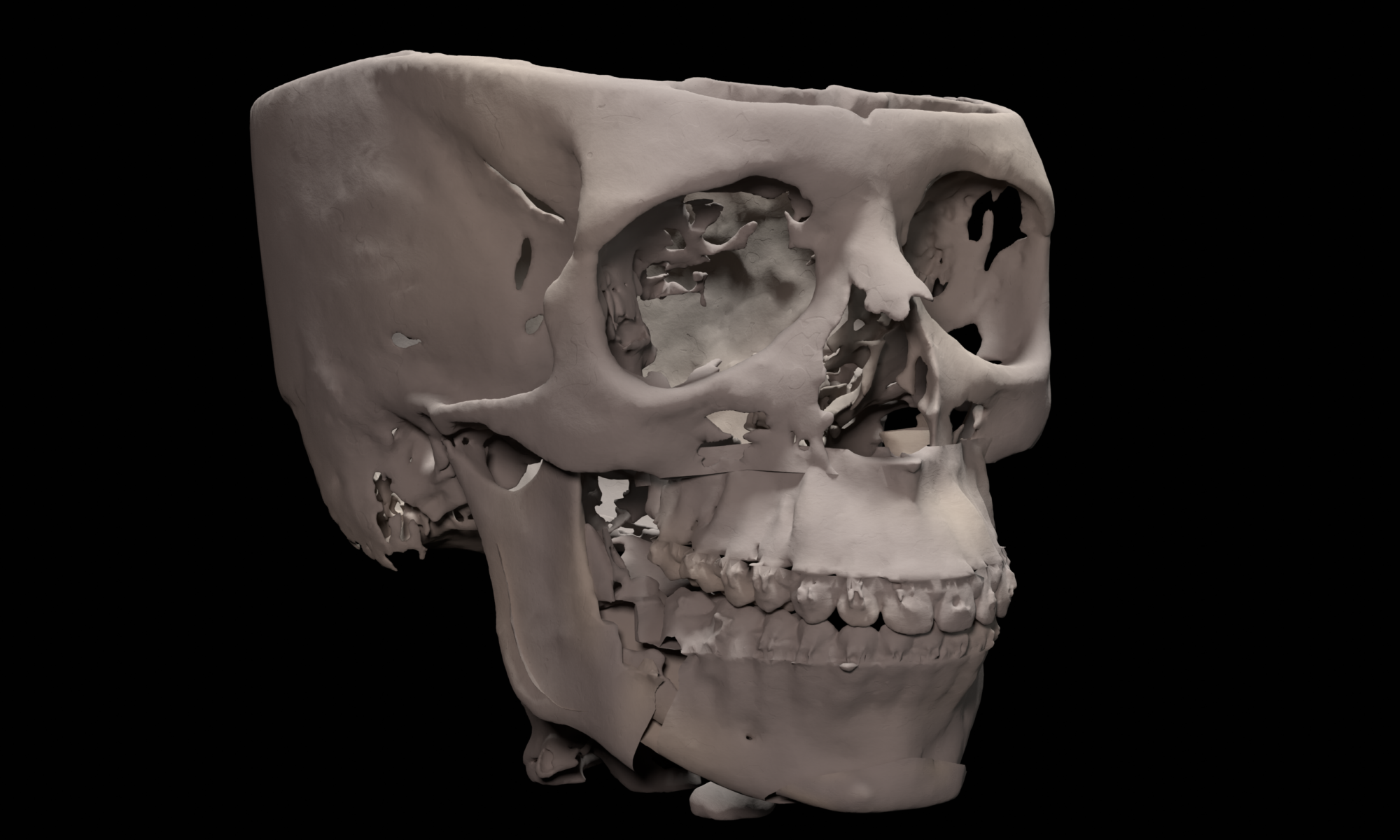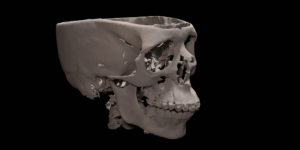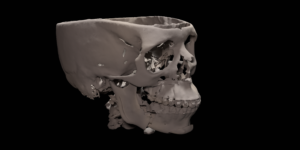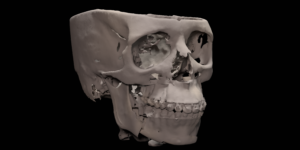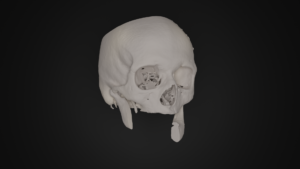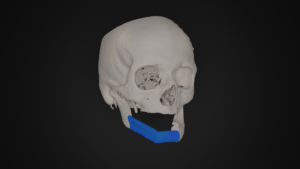For trauma cases, 3D models in which mobile bone segments have been repositioned according to the normal patient anatomy are 3D printed and used to pre-bend reconstruction plates, saving time during surgery.
Orthognathic surgery
Orthognathic surgery involves a correction of the position of the lower and/or upper jaw. The desired post-operative position of the lower and/or upper jaw are virtually planned using 3D CT scans, clinical measurements and photographs. To translate the 3D virtual planning to the patient in the operating room, patient specific surgical guides are designed and 3D printed. These surgical guides that fit the dentition of the patient indicate the desired translation and rotation of the jaws with high accuracy.
Oncology
Removal of a tumor in the oral cavity that has invaded into the bone may require the removal of a part of the bone, thereby losing continuity of the bone. The removal of the tumor including a required margin is 3D virtually planned in which the information of different imaging modalities is combined, such as CT and MRI. The surgical resection planning is translated to the operation room by designing patient specific surgical guides that uniquely fit the patient anatomy and indicate the virtually planned resection during surgery. Using these same techniques, a reconstruction of the bone using fibula bone can be 3D virtually planned and transferred to the operating room using a patient specific reconstruction guide.
